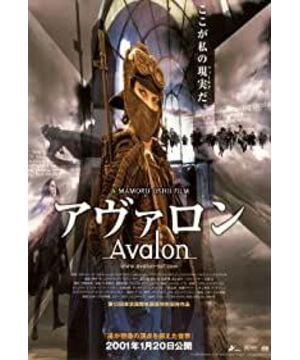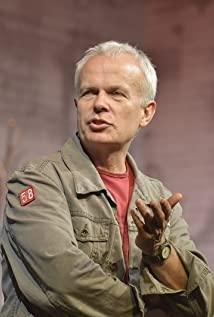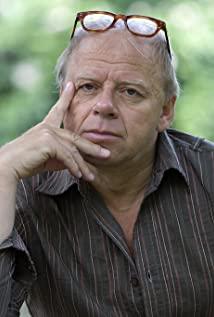said that Oshii Mamoru wanted to make a live-action movie because he was famous, but he himself is a thorough animation director, with the blood of cartoons flowing in his veins, but he keeps on Want to break away from animation and become a person who is only known as a film director. This contradiction, coupled with Oshii Mamoru's pursuit of connotation, has resulted in a weird atmosphere in this film, but this weird feeling is also its charm.
Forget the director, just look at the plot of the film.
At first glance, Avalon looks very similar to Ghost in the Shell, but in essence, I think the two are completely different. Conquer is talking about a whimsical vision, that is, the network life form. Avalon is discussing a classic philosophical question, illusion and reality, but Oshii Mamoru does not mean to embarrass the audience on this issue. There are a total of four worlds in the film. The first is the game world (yellow) and the real world (gray) where the ashes live (gray), then the real world (color), and finally there is another one. The hidden world, that is, the world that Ashes will enter after the last shot of the ghost in the whole film, which is very likely to be the real world. Some people also think that Ashes finally returned to the gray world, that is, the gray world is the real world, but this is actually implied in the front of the film. First of all, it is obvious that there are no words in the book of the gray world. This is a very typical expression of the illusory world. The method, and then the people on the tram are fixed (NPC), and the statues in the gray world are faceless like those in the yellow world, alluding to the forgotten world here. These points can basically confirm that the gray world is not the real world, and when we see the color world appear, we believe that the gray world is not real. In the end, the face statue flashed by the protagonist before the final shot of the ghost suggests that the world afterwards will not be a forgotten world. Shooting ghosts is the way to upgrade. As the bishop promised, Ashes will join them and return to the real world. And the last welcome to Avalon means that it is no longer the game, but the real island hidden behind the mist and apple trees.
Despite the twists and turns of the plot, the beauty of Avalon is actually not in its plot, not only in its thinking, but also in its unique and weird temperament. I think this weird temperament comes from its Oshii Mamoru-style filming techniques and scenes. This method makes it not like a cartoon when watching the shell, and it makes it not like a movie in Avalon (please ignore me here to exclude the animation from the movie), and it is this This kind of violation is fascinating. But the feelings of Goku and Avalon are still different. The main thing that is more attractive when you look at Goku is the theme, while the temperament that is more attractive when you look at Avalon. However, this kind of temperament is greatly reduced during the battle. I think the battle scene is the most unsightly part of the whole film, and it feels like a special film. . (Or is it intentional?)
Come back to the director. I think Mamoru Oshii is a completely rational person, so he can understand his films by analysis. His films are very clear, but they don’t want us to watch them. I understand. But he is not only a rational person, rational movies are not good-looking, he is a person who tries to understand sensibility with reason, and even pursues sensibility. contradiction. The reason why Oshii Mamoru hates animation is because all the circumstances of the animation are controlled by the director. There is no accident. He even deliberately adds some extra things to the animation, and this is indeed something that ordinary film directors should avoid as much as possible.
Cartoons and movies, rationality and sensibility, this kind of contradiction and the pursuit of ideology is the source of motivation for Oshii Mamoru, and it is also the reason that makes his things look good.
View more about Avalon reviews











